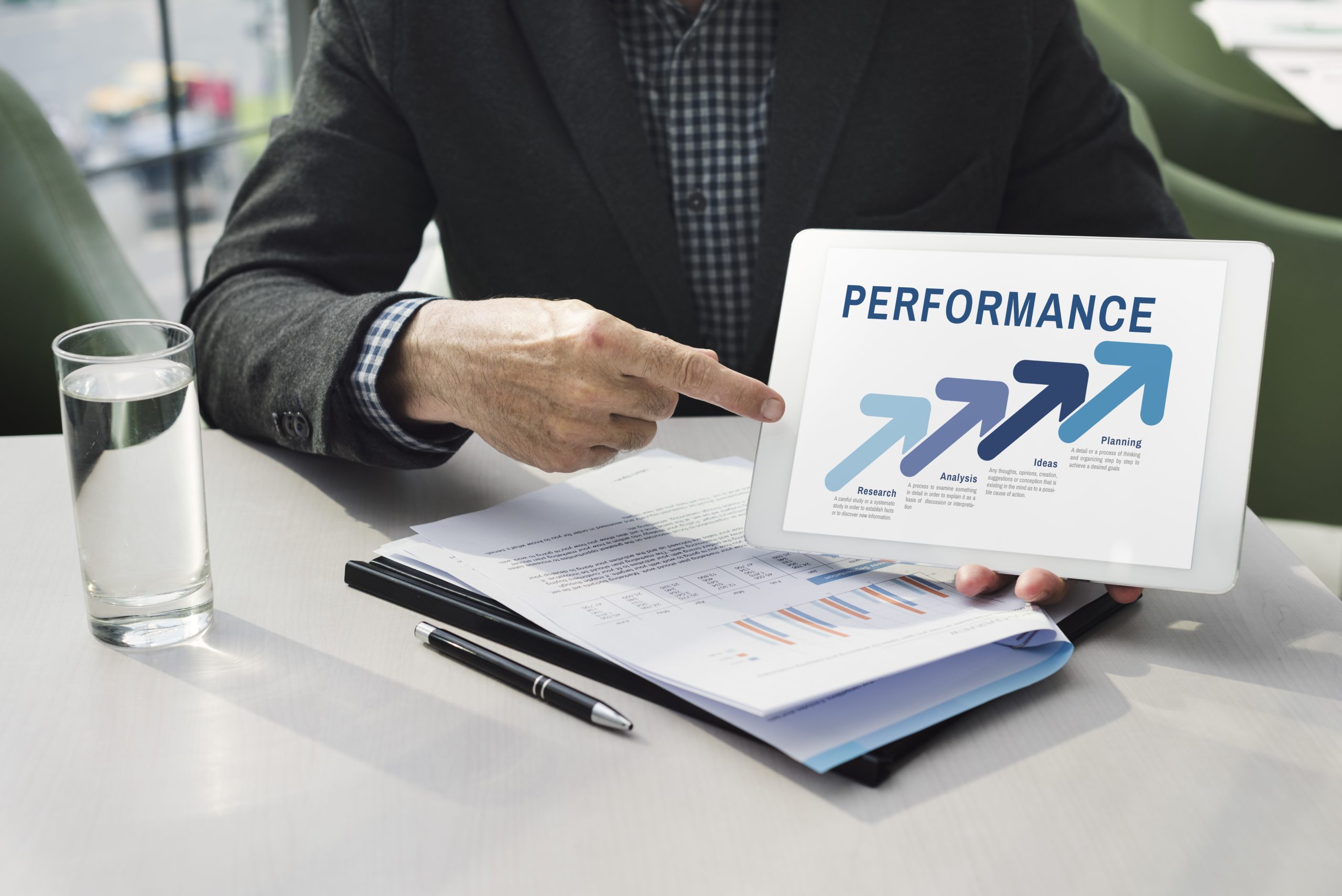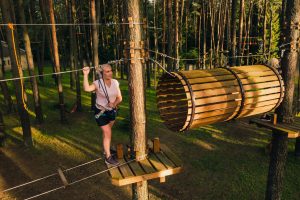
5 Simple Steps For Personal Growth And Development
Are you looking to live a happier and more fulfilling life? Personal growth and development may be the answer that you’re looking for. It’s a lifelong journey that focuses on improving different aspects of your life, including physical and mental health, personal and professional goals, and relationships. Developing the right mindset is crucial to your success in this journey, and a growth mindset is an essential tool that you need. It will enable you to embrace challenges, learn from experiences, and overcome limiting beliefs that might be holding you back. By committing to personal growth, you will enjoy the benefits of a more fulfilling life, increased satisfaction, and a better understanding of yourself. So, are you ready to start your personal growth journey?
Step 1: Set SMART Goals
Personal growth and development can seem overwhelming without a clear plan in place. This is where setting SMART goals can be incredibly helpful. SMART goals are Specific, Measurable, Achievable, Relevant, and Time-bound. They provide a structured approach to achieving personal growth objectives and help to avoid frustration and wasted effort.
Setting SMART goals provides several benefits for personal growth. For one, they give direction and clarity to the steps needed to achieve personal growth. Furthermore, they help to keep the individual motivated and on track towards their personal development goals. Finally, SMART goals enable individuals to track their progress as they work towards achieving their personal growth objectives.
The 5 Elements of a SMART Goal
1. Specific: Your goals should be clear and well-defined. This helps to ensure that you know precisely what you need to accomplish and avoid ambiguity.
2. Measurable: Your goals should be measured to check progress and impact. This means ensuring that you can track each step along the way and have a clear concept of what will be achieved when you attain your goals.
3. Achievable: Your goals should be realistic and attainable based on your current abilities and resources. While ambitious goals are great motivators, unrealistic goals can lead to frustration and a lack of motivation.
4. Relevant: Your goals should be pertinent to your overall personal growth goals. Ensure that the objectives fit within your overall personal growth plan and support your goals for the present and the future.
5. Time-bound: Your goals should be time-bound with a realistic end-date to keep you on track. A deadline to work towards helps to keep you motivated and ensures that you have a specific timeline to work with.
Step 2: Develop a Positive Mindset
Developing a positive mindset is an essential component of personal growth and development. It allows us to view challenges as opportunities for growth and approach life with a sense of optimism. One important step on the path to a positive mindset is to identify and remove negative influences from our lives.
- Surround yourself with positivity
One of the best ways to remove negative influences is to surround ourselves with people who inspire us and uplift us. Seek out friends and mentors who share your values and beliefs, and who exhibit a positive outlook on life. Joining a group or club that aligns with your interests can also be a great way to connect with like-minded individuals.
- Limit exposure to negative media
We are bombarded with negative media every day – from news stories to social media posts. While it’s important to stay informed, it’s equally important to limit your exposure to negativity as much as possible. Choose sources of news and information that are reputable and balanced, and avoid excessive exposure to negative or sensationalized stories.
- Avoid negative self-talk
Negative self-talk can be incredibly damaging to our self-esteem and our ability to develop a positive mindset. One way to combat negative self-talk is to challenge our thoughts and beliefs. When you notice negative self-talk creeping in, pause and ask yourself, “Is this belief rooted in reality, or is it a distorted thought?” Practice replacing negative self-talk with positive affirmations and realistic self-talk.
By identifying and removing negative influences from our lives, we create space for positivity and growth. Surround yourself with positive people, limit exposure to negative media, and practice positive self-talk to start fostering a positive mindset.
Step 3: Focus on Physical Health and Well-Being
Personal growth and development is a holistic process that encompasses all aspects of an individual’s life. When it comes to achieving personal growth and development, focusing on physical health and well-being is crucial. Physical health plays a vital role in mental and emotional well-being, and thus, should not be overlooked.
Regular exercise is an excellent way to improve physical health and mental and emotional well-being. Exercise releases endorphins, the body’s feel-good hormones, which can improve mood and reduce stress levels. Moreover, regular exercise helps maintain a healthy weight, builds muscle, and improves overall cardiovascular health.
In addition to exercise, healthy eating habits are also essential for achieving personal growth and development. A balanced diet that includes fruits, vegetables, lean proteins, and complex carbohydrates provides the necessary nutrients to fuel the body, support immune function and promote overall well-being. A diet consisting of highly processed foods, sugar, and unhealthy fats can lead to weight gain, sluggishness, and chronic health conditions.
Quality sleep is also crucial for physical health and well-being. It is during sleep that the body repairs and restores itself, and lack of sleep can lead to a myriad of health issues such as reduced cognitive function, increased irritability, and weakened immune function. Adults should aim for 7-8 hours of quality sleep every night to function optimally.
Living a sedentary lifestyle can lead to several physical health issues, including obesity, heart disease, and diabetes. A sedentary lifestyle can also negatively impact mental and emotional well-being. Incorporating healthy habits into daily life, such as taking the stairs instead of the elevator, going for a walk, or stretching during breaks are simple yet effective ways to improve physical health and well-being.
Taking care of the physical body is a crucial aspect of personal growth and development. Focusing on physical health not only improves physical well-being but also has a positive impact on mental and emotional health. Incorporating healthy habits into daily life such as regular exercise, healthy eating, and quality sleep can help individuals achieve personal growth and development.
Step 4: Increase Mental Strength and Awareness
Developing mental strength and awareness is crucial for personal growth and development. This step involves focusing on cognitive function, emotional well-being, and stress management. Here are some techniques and practices that can help you improve your mental strength and awareness:
1. Meditation Practice
Meditation is a powerful technique for increasing mindfulness and concentration, reducing stress, and enhancing emotional intelligence. It involves focusing on your breath and observing your thoughts without judgment. Regular meditation practice can help reduce anxiety, improve mood, and increase feelings of well-being. Starting with short 5-10 minute sessions a day can help develop the habit of meditation.
2. Exercise
Regular exercise not only improves physical health but is also beneficial for mental health. Exercise helps increase focus, reduce stress and anxiety, and boost energy levels. Even just a 30-minute walk or a quick workout can help improve mood and clear the mind.
3. Stress-Reducing Activities
Engaging in stress-reducing activities can also help improve mental strength and awareness. Spending time in nature, practicing creative hobbies such as painting or playing music, and spending time with loved ones can all help reduce stress levels and promote a positive mindset.
4. Mindfulness Practice
The practice of mindfulness involves becoming more aware of your thoughts, feelings, and behaviors. It helps increase self-awareness and promotes self-growth. Mindfulness practice involves paying attention to the present moment and acknowledging your thoughts without judgment. Practicing mindfulness regularly can help strengthen your mental resilience and emotional intelligence.
Incorporating these techniques and practices into your daily routine can help you develop mental strength and awareness, leading to a more fulfilling and balanced life.
Step 5: Invest in Yourself and Your Future
Personal growth and development is a lifelong journey. It doesn’t stop when you reach a certain age or achieve a certain level of success. Rather, it’s an ongoing process that requires a commitment to self-improvement. The best way to grow and improve is to invest in yourself and your future.
Investing in yourself means continuing to learn, grow and develop yourself professionally and personally. These investments can take many forms, such as taking courses, attending workshops or seminars, or even learning a new skill like playing a musical instrument or improving writing skills. By investing in yourself, you are committing to your own personal and professional growth.
Investing in oneself can be a key factor in achieving success in both personal and professional life. Those who invest in personal development are more likely to be fulfilled as they pursue their goals and passions. Continuing education helps to build knowledge and skills which have the potential to lead to greater opportunities in the future.
One way to invest in oneself is by reading books that teach important skills and share useful information. For example, if you’re interested in starting a business, you could read books on entrepreneurship or marketing. You could also start a side hustle to gain practical experience in a field of your choice. Another option is to find a mentor who can guide you through the process of professional and personal development. They can offer advice, give feedback, and share their own experiences.
Investing in personal and professional growth is as much about taking action as it is about accumulating knowledge. By taking courses, attending workshops or seminars, or finding a mentor, you’re taking the necessary steps to reach your goals. These investments in yourself can lead to personal fulfillment and professional success, and they’re worth your time and effort.

Conclusion
In conclusion, personal growth and development is a lifelong journey. It requires commitment, effort, and investment. Regular exercise, stress-reducing activities, mindfulness practice, and investing in yourself are all great ways to promote personal growth and development. These practices will help you become more aware of yourself and your potential for success. Take the time to invest in yourself so you can reach your goals and live a more fulfilling life .


